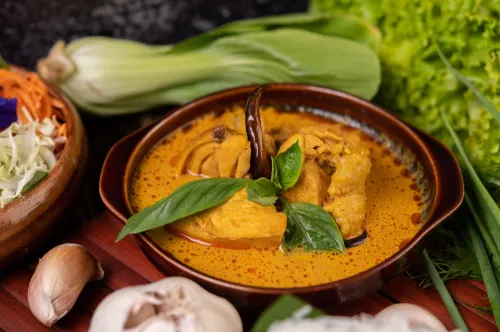Southern vs Northern Indian Cuisine: What’s on the Menu at Fathima’s?
Some meals speak in hushed flavours; others report their presence like a wedding band. In Northern India, food is fire-kissed and slow-stirred, sewn together with balm, cashew, and cardamom. Tandoori smoke lingers in every naan fold. Paneer dances in tomato-rich butter sauce. Even vegetables arrive bold, holding their own against spice. The wheat is warm, soft, and nearly always buttery. This isn’t fair fare; it’s ceremonial, hearty, and nostalgic, like a wool shawl thrown over your shoulders at dusk. Every bite whispers home and then dares you to ask for more.
Southern Flavors Speak in Lightning
If Northern food is the heart, Southern food is the monsoon, quick, electric, and refreshing. Curry leaves shatter in ghee-like firecrackers. Tamarind coils its way through broths with a tang you never forget. Dosa edges flake like dried petals, while soft idlis steam in quiet resilience. No dairy blanket here, just brightness, movement, and restraint. Coconut doesn’t scream; it steadies. Spice doesn’t stay; it lifts. Eating from the South is like tasting topography: coastal winds, pepper plantations, banana leaves, and rain-washed kitchens. Each plate is a pulse rather than a pause.
Where Wheat Meets Rice Without Apology
There’s no need to pick a side when both offer something essential. The North arrives with baskets stuffed parathas glistening from the tawa, kulchas soft enough to fold, and rotis eager to be torn. The South responds in bowls of lemon rice humming with mustard seeds, Pongal that soothes like lullabies or coconut rice barely needing accompaniment. Where the North scoops, the South pours. One catches the gravy; the other absorbs it. Each grain or fold tells you something about patience, about land, about what the body needs when it's time to eat and remember.
Vegetarian Food Without Compromise
In both regions, meatless dishes aren’t a detour; they're the destination. Saag paneer, dal makhani, and chole, each ladled with intention in the North, feel like stories passed through generations. In the South, kootu, avial, and rasam take the lead. Vegetables are never an afterthought. They’re the memory of the market, the blessing of the harvest, the rhythm of weekday kitchens. Texture counts crunch, creaminess, the chew of okra, and the silk of eggplant. Spices don’t mask; they highlight. When food this rooted comes to the table, it commands attention without ever needing to raise its voice.
The Art of Knowing Heat
Not all spice is fire. Some are smoking. Some are scent. Some is time. In the North, it's a quiet build bay leaf and clove opening up like conversation. In the South, it’s a sudden lift of black pepper, red chilli, and sour tamarind striking the palate like a cymbal. Each region plays its instrument differently. Neither tries to win. They just express. And when the heat is just right, balanced by ghee, soothed by rice, and echoed in a yogurt side, you understand why Indian food isn’t spicy. It’s precise. It’s deliberate. It’s emotional.
One Restaurant, Many Maps
Some places fuse for simplicity. Others showcase differences with dignity. The menu at Fathima’s doesn’t blend South into the North; it honours them both. Butter chicken exists beside pepper chicken. Biryani holds hands with Sambhar. And somehow, the sequence makes sense. Each dish is chosen, not mixed. One customer sips rasam; another swirls paneer in curry. No dish tries to be both. Each just tries to be right. This isn’t about compromise. It’s about letting tradition breathe in its own space. And when both traditions gather at one table? That’s the celebration.
Conclusion
From the clay ovens of North India to the spice-laced broths of the South, regional Indian cooking offers more than variety; it offers intention. The two culinary worlds may speak differently, but both are fluent in comfort, heritage, and spice. Fathimas Indian Kitchen creates a shared table where idli and naan feel equally at home and where the menu isn’t just a list; it’s a journey through tradition, geography, and memory. Whether your cravings lean creamy or crisp, rich or refreshing, the table remains open and always flavorful.



Leave a Comment
Comments (0)